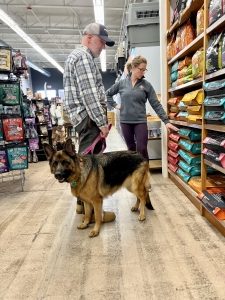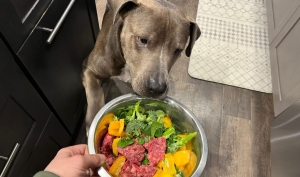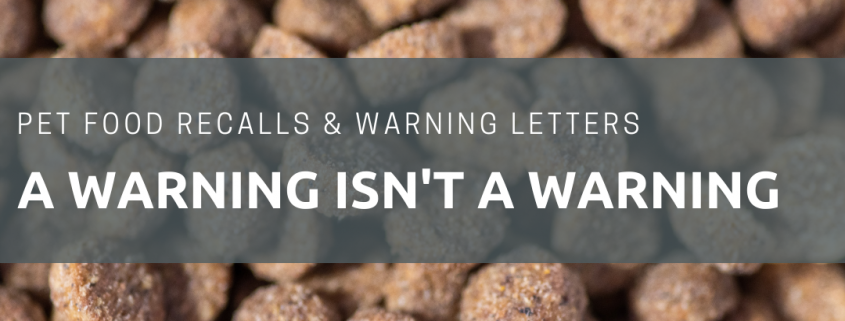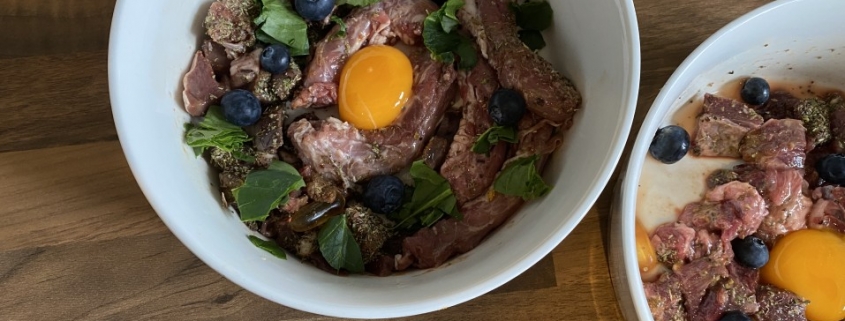….and other lessons courtesy of Midwestern Pet Foods
A little background:
If you’re just catching up, Midwestern Pet Foods (manufacturer of Earthborn, ProPac, SportMix, CanineX, Venture, Unrefined and Wholesomes) rounded out 2020 with an expansive ‘voluntary’ recall’ secondary to aflatoxin contamination among a variety of their products. As 2021 began, the ‘voluntary’ recall became larger, as retailers and consumers we were assured that this incident was isolated to one of their four US plants. If you are wondering why I put ‘voluntary’ in quotes, it’s because voluntary recalls are actually not voluntary – they are forced by the FDA (For more on that, see my other article ‘Voluntary Recalls Are Not Voluntary’ here). In short, when a company is subject to a voluntary recall it appears to imply that either the company did not have to recall the product, or that they may have found the issue themselves and thus recalled the product ‘out of an abundance of caution,’ when in fact that is usually pretty far from the truth.
In the case of the aflatoxin recall with Midwestern Pet Foods, the recall was initiated by the Missouri Department of Agriculture as a result of pet illness reports and not Midwestern Pet Foods identifying the issue. Looking at the timeline of how things progressed, the initial recall was announced on December 30, 2020, expanded on January 11, 2021 (to include over 1,000 lots of pet food) and was followed up by an updated outbreak and advisory on January 26, 2021. The timeline and expansion of the number of lots and amount of pet food impacted shows just how important it is for pet owners and retailers to ask proper questions of their manufacturers to ensure the products they stock or feed their pets is safe – and to protect their businesses and livelihoods. In other words, the recall started out small and seemingly to be a self-caught issue, however the fairly quick expansion tells a different story. If Midwestern Pet Foods was properly testing inbound ingredients (i.e. aflatoxins in grains), testing foods after production and prior to leaving the facility (positive release) this would have never happened.
The outbreak and advisory notice outlines how the FDA was working with 10 different states to determine the impact of the aflatoxin contamination of Midwestern’s portfolio of brands. This advisory also provided an update that included at least 35 additional countries where the foods were likely distributed to and thus impacted by this recall in the United States. For example, The Food and Drugs Authority in Ghana issued a directive for all foods manufactured by Midwestern Pet Foods to be returned to the importer due to dangerously high levels of aflatoxin. For context, some of the products tested contained aflatoxin at levels as high as 558 ppb. FDA considers that aflatoxin levels in dog and cat food above 20 ppb will support a charge of adulteration because it is fatal or injurious to the health of pets.
Not an isolated incident
Soon, the general public, retailers and veterinarians alike realized that this was not an isolated incident and in fact was a result of widespread food-safety issues and problems across all four plants owned and operated by Midwestern Pet Foods. The worldwide aflatoxin recall was almost immediately followed by a second recall due to Salmonella contamination of several other lots of products in March of 2021 made in a second Midwestern Pet Foods facility. If you read the recall notice on the FDA website, you’ll note that this recall is also quite expansive involving several recipes and brands. When recalls are this large, several questions should be raised which include but are not limited to:
- Was the company properly inbound testing raw ingredients to ensure they were free of contamination?
- Did the company have proper documentation, kill steps and cleaning procedures of storage areas, equipment etc. to prevent cross contamination between lots?
- Was the company properly outbound testing their final products?
Although the company claims that Salmonella-contaminated product never made it into the marketplace, and they caught the recall prior to it leaving their facility, the FDA letter states that it did indeed get distributed into interstate commerce. If none of the contaminated product left their facility and they were able to provide documentation to prove that no other product was impacted, then a recall would not have been triggered. This fact tells us again that food safety was an issue, and that again we see a large transparency problem with another manufacturer in the pet food industry.
The “Warning Letter”
The FDA Warning Letter issued to Midwestern Pet Foods on August 9, 2021, included five FDA Form 483’s. An FDA Form 483 is issued to firm management at the conclusion of an inspection when an investigator(s) has observed any conditions that in their judgment may constitute violations of the Food Drug and Cosmetic (FD&C) Act and related Acts. I’ve heard a variety of comments after this warning letter was issued from pet owners and retailers – the largest, and most concerning is that many believe that because no new recall was issued that the Warning Letter is not really a cause for concern. Nothing is further from the truth and in fact, I would argue that the Warning Letter – impacting all 4 locations – is worse than a recall. Why do I say that?
This Warning Letter was issued as a Corporate Warning Letter because at the conclusion of inspections at all four facilities the FDA issued these FDA Form 483’s due to documented issues at each of their facilities:
“At the close of each inspection, you or your plant manager was issued a Form FDA 483, Inspectional Observations. We acknowledge you1 have provided written Form FDA 483 responses dated February 25, 2021 (OK), March 12, 2021 (NY), March 19, 2021 (IN), March 30, 2021 (IL), and May 6, 2021 (IL) describing corrective actions you have taken or plan to take to address the observations at each of your facilities.”
This shows that OK, IN and NY each received one, and IL received two FDA Form 483’s for a total of five. The problem is that most people have never read? past the initial FDA in Brief that was released on August 17th, 2021. This letter detailed numerous apparent violations of the Federal Food, Drug, and Cosmetic Act that were shared across the four sites. The FDA states that these violations are likely to have contributed to the illness or death of hundreds of dogs resulting from high levels of aflatoxin secondary to violations of Current Good Manufacturing Practice, Hazard Analysis, and Risk-Based Preventive Controls for Food for Animals regulation.
Per the FDA/CVM: The last of the four inspections concluded on April 16, 2021, and FDA immediately began the process of examining and compiling evidence from the multiple inspections into a corporate-wide warning letter.
Because the firm had voluntarily recalled the pet foods that had the potential to be contaminated with Salmonella or aflatoxin, because investigators provided initial feedback to the firm about their inspectional observations (FDA Form 483s), and because the Agency did not have evidence that violative Midwestern-manufactured product was currently in the marketplace, the FDA did not initiate a product seizure or injunction case.
However, because the conditions observed during the inspections indicated significant problems, the Agency took the step of issuing a corporate-wide warning letter.
A Warning Letter is not simply a ‘Warning’
This Warning Letter is far more than the FDA saying ‘Hey, clean up your act’ – this is a warning to ‘do better next time’. Instead, a warning letter is typically issued after an inspection of a plant or manufacturing facility that finds quality control issues and/or after consumer-related complaints as a result of injury or death. In this case, the warning letter started with consumer complaints, which triggered inspections at all four sites which then found further issues. These issues are outlined in this letter in which the FDA requests corrective action by Midwestern Pet Foods:
- Hazard Analysis & Risk-Based Preventive Controls Requirements – FDA investigators “found significant violations that did not identify or implement preventative controls” to provide assurances that prevented product manufactured, processed, pack or held by their OK, NY, IN and IL facilities would not be adulterated
- In regard to aflatoxin, the OK, NY, IN and IL facilities all “failed to follow their own and accepted sample preparation procedures by both the test kit manufacturer”, USDA mycotoxin handbook and/or their own facility to detect and identify aflatoxin in corn and corn products at their facilities. “Failure to follow proper procedure resulted in product NOT being rejected when it should have been.” In short, the procedure they had in place was ineffective because it was never properly implemented or executed.
- In regard to Salmonella, the OK, NY, IN and IL facilities also “failed to implement and execute adequate procedures to detect and prevent Salmonella contamination” of their products. In the FDA Warning Letter it states the following:
“During the IL inspection, you recalled approximately 104 products of dry dog and cat diets made in your IL facility from October 26, 2020 – November 12, 2020, February 1, 2021 – February 12, 2021, and March 15, 2021 – March 19, 2021, because your routine monitoring yielded Salmonella-positive results for pet diets manufactured on common equipment during those periods.”
The explanation of such food safety issues within this letter is what, in my opinion, makes this worse than a recall letter. Recalls are supposed to catch unfortunate accidents and rare occurrences of pet food adulteration. The highlights of these violations go far beyond a mistake, oversight, or single incidence of human error because they expand across multiple products, multiple lots on multiple dates of manufacture simply because they were common mispractice across all four of their manufacturing facilities. Further, it’s important to point out that these recalls were indeed so large, likely because of two reasons: poor food safety AND documentation of manufacturing. Was it likely that all lots impacted were contaminated? No, instead a large amount of product was recalled in an attempt to reduce the potential for any to be in the marketplace. On the other hand, is it likely that all contaminated products were found or recalled? It is uncertain, and this is because nowhere within the FDA reports does it state that all retained samples were tested for all products in the marketplace. It is unknown if all contaminated products were caught since aflatoxins are never evenly dispersed in grains, and instead you have ‘hot spots’. The hot spots are the reason why a robust and thorough screening program is needed for incoming raw ingredients, during manufacture and prior to distribution into the marketplace. In other words, if these programs are implemented properly, things like aflatoxin and salmonella are preventable. As a result, the FDA likely made a press release so consumers, retailers and veterinarians can be hyper-vigilant in seeing early warning signs of aflatoxin poisoning in case all affected lots were not recalled.
How does a Warning Letter get resolved?
Within this letter, the FDA also states that voluntarily recalling product does not prevent the recurrence of such hazards (aflatoxin and Salmonella) in their products. Hence the need for Midwestern Pet Foods to respond to this robust Warning Letter with their plans to mitigate these risks, upgrade their Food Safety procedures in the future, document proper training and implementation of the programs (i.e. aflatoxin analysis and environmental Salmonella detection). While Midwestern has responded to some of these violations, as outlined within the Warning Letter, there still remains more work to be done as well as additional inspections of all facilities to ensure compliance.
Not until the FDA inspects the facilities to ensure that their corrective measures are implemented and being executed properly, will the Warning Letter be resolved. In the meantime, since the warning letter and investigation are still open, one would be prudent to be cautious of any product coming from any facility with an open or unresolved issue.
At this point, you may be wondering what happened to Hill’s Warning Letter that was issued as a result of excessive levels of Vitamin D. This massive recall was also global and resulted from Hill’s not following their own food safety procedures. This Warning Letter is also currently unresolved, likely due to COVID restrictions and the FDA not being able to adequately execute a robust inspection. One could also argue that regulatory authorities don’t have the capacity to police everyone all of the time, or that they may be letting such a large manufacturer get by for reasons we can maybe discuss at another time. Regardless, the lesson is that unless a warning letter is resolved you should probably find another pet food for your pet, or stock a different brand in your retail or clinic location.
What if a Warning Letter is not resolved?
An unresolved Warning Letter has actually never happened in the pet food industry, although it has happened in veterinary product and livestock industries. This is because pet food companies have historically complied with any changes that the FDA suggested after issuance of the Warning Letter. So, what happens if a pet food, treat, or supplement company fails to make adequate changes or fails to comply altogether? It’s likely that the U.S. Department of Justice would have to bring on an injunction on the FDA’s behalf. For an example of this, we’d have to look to human industry examples to determine what would happen…
Current Good Manufacturing Practices (cGMP) are historically what trip up food and supplement manufacturers. Failure of a company to conduct their manufacturing under such practices after being issued a Warning Letter would result in the U.S. Department of Justice doing what? on behalf of the FDA. Just one example, the FDA shut down Sunset Natural Products for manufacturing and distributing adulterated dietary supplements following a ruling by a U.S. District Court which issued a consent decree against the company. Under a consent decree the company is not allowed to manufacture or sell their products until the FDA determines the business is in compliance with the Federal Food, Drug, and Cosmetic Act. While this has not happened often, it is possible for companies to resurrect themselves post past? an event such as these, but it does take quite a bit of reinvention.
Per the FDA/CVM: injunctions have also been regularly filed against dairy farms that have introduced food containing illegal drug residues into the U.S. food supply. FDA initiates civil actions like seizures and injunctions for different reasons than criminal actions. Civil actions are brought to protect the public from harmful products under FDA’s jurisdiction. Criminal actions are brought to punish culpable parties for wrongful action and discourage the behavior. Given the different goals and legal requirements for each, there are different procedures that FDA follows to initiate each type of case. Please see Chapter 6 of FDA’s Regulatory Procedures Manual for FDA’s policies about pursuing seizures, injunctions, and prosecution of criminal matters.
Depending on the nature of the violation, it is the FDA’s general practice to give individuals and firms an opportunity to take voluntary and prompt corrective action before it initiates a judicial action. In some cases, however, judicial action is necessary to protect public health. As noted above, all judicial action must be pursued by FDA through the U.S. Department of Justice.
Based on this and other incidents we can hypothesize that if a company did not adequately respond to or respond at all to a Warning Letter, the FDA would take legal means to shut down operations of that pet food company. In this case, involving Midwestern there are a number of issues across all of their facilities indicating that substantial overhaul of their cGMP is needed. If this does not happen, or happen to the level of satisfying the FDA, we could potentially see an injunction against the company – although this would be a first for the pet food industry.
What should pet parents, retailers and veterinarians do?
At the end of the day, this is not just about Midwestern Pet Food, because there are multiple recent examples of adulterated pet foods in the marketplace that include Evanger’s, Sunshine Mills, Hill’s Pet Nutrition, Blue Ridge, NomNom…I could keep going. The lesson is just another example of why it is so important to ask pointed and meaningful questions of your pet food manufacturers. These questions include but are not limited to:
- Do you have current 3rd party food safety (cGMP, SQF) certifications?
- Do you perform a Nutritional Analysis on ALL of your finished formulas?
- Do you perform digestibility testing to ensure dogs/cats can absorb all required nutrients your products are formulated to meet?
Bottom line: If your pet food company cannot answer these questions or they say the information is proprietary, don’t feed their food!
ABOUT THE AUTHOR:
Nicole Cammack
Nicole founded NorthPoint Pets & Company to fill a void for pet parents: information and transparency. Nicci understood that, while there are countless pet stores and unending opportunities for buying online, much of the information about pet food and health is incomplete, biased, or misleading. Since 2014, she is proudly leading an incredibly talented team that boasts several national awards as the leader in independent pet retail, innovation, education, health, nutrition and transparency.
Research & evolution are the foundation for everything NorthPoint stands upon. Currently, Nicole is working on her PhD at the University of Georgia (UGA), College of Veterinary Medicine in Canine Nutrition & Metabolomics. In short, she is studying how the way we feed our pets can influence disease. Although research is not a new field for her, as she has experience in clinical research for diseases such as obesity, diabetes, Alzheimer’s Disease and various cancers. Her undergraduate and graduate education includes biology, chemistry, business and nutrition. She has worked in the pharmaceutical industry on multiple R&D projects and has had the privilege to learn from leading international figures in both the human and pet health industries. When not at NorthPoint or UGA she can be found presenting at national conferences, including federal, state, and municipal organizations. Her most recent publication reports on the prevalence of reported pathogenic infections related to raw pet food diets.















